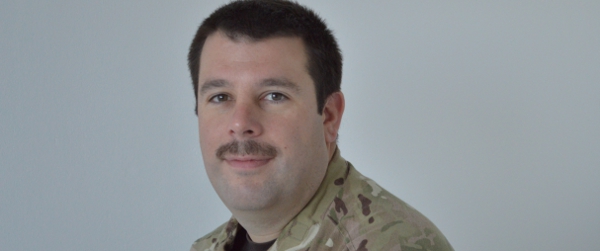
Esri’s Geographic Information System (GIS) software tools have been implemented by two organisations to overcome different problems.
Here representatives of the organisations talk about the challenges they wanted to address using the software and how Esri help them solve their issues.
Royal Engineers
Implementing geomapping technology in Afghanistan presented unique challenges for the Royal Engineers.
Warrant officer Anthony Giles was tasked with capability development; looking at new technology and devising ways of using it to improve the army’s capabilities.
Soldiers needed the ability to update maps quickly to reflect the threats and changing nature of the landscape, and the Engineers opted to use "a whole range of Esri software, from a normal map for desktop work all the way through to an RGI server that allows us to do web-enabled work", says Giles.
He adds that one of the big challenges in building a solution was working within the constraints of local technological sophistication.
"The main problem we have is with communication systems, putting something over fairly decent infrastructure," admits Giles. "Out in Afghanistan that might be over microwave links where you’re down to 128kbs a second. You have to build something to work over that low bandwidth."
But he sees one advantage of Esri’s technology being its openness to third party integration.
"Because Esri’s software is built on Open Geospatial Compliance standards, it’s easy for third party software to implement to those standards so that whatever we create should be able to work."
However, the main benefit the army sees from the implementation is that there is now a shared way of viewing data, with everyone needing access to the platform now able to get it – from base operations to those out on patrol, who go equipped with the latest hard copy of the map.
It means threats can be assessed and the landscape analysed, leading to decisions including whether an expedition needs air cover.
"Now everyone’s seeing that updated information; it’s not going out of date," says Giles.
Soon people will be able to add features to the map as well, including information and photographs available when a user clicks on an icon, a tool being rolled out in Afghanistan at the moment.
West Coast Group
The West Coast Group provides energy services to UK electricity network operators, and must fulfill its statutory duty to ensure that trees do not grow too close to overhead power lines – the dangers include damaging electricity cables, causing power cuts and threats to public safety.
But the traditional way planners were tackling the issue was by photocopying paper maps and marking sections of power lines with a highlighter. Surveyors would then take these on site and manually fill in forms to indicate where vegetation needed cutting, then would return the forms to the office, where staff would transfer them into the computer system to task a team with the work.
But West Coast software engineer Andrew Corcoran says the process the firm had in place was hugely flawed.
"They were doing everything on paper, coming back to the office, and you can imagine soggy bits of paper, trying to transfer that into an electronic system," he explains. "We were losing data here there and everywhere and it was getting transcribed incorrectly."
His task was to get rid of this outdated method and implement a process that would make West Coast’s duty much easier to execute, as well as solving another problem where the firm’s vast geographical data was only available to those with the correct software installed on their machines.
Corcoran explains: "The first challenge was to provide a web interface into the data, a simple one as not everyone is a GIS user, and that took us about a year to implement."
The bigger challenge was creating a new method of working that would be simple enough to use to overcome surveyors’ loyalty to soggy paper.
"We developed a mobile application using Esri technology," says Corcoran, adding that they worked with one person from each team to get their feedback, which was used to improve the solution, as well as getting them to encourage their colleagues to adopt the technology installed on Panasonic Toughpad tablets.
"That’s enabled them to collect the data electronically and post it back to the office remotely," explains Corcoran.
"That’s cut down on them having to come to the office a lot, which saves a lot of time. Especially in field work a lot of money is spent in fuel costs. It’s one of those things where you say ‘how did we work before?’"






